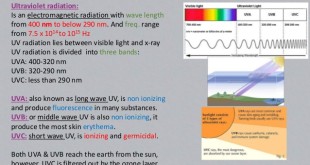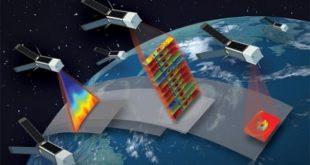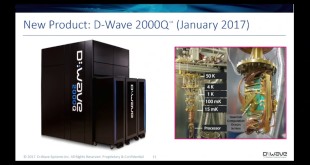The overarching goal of quantum information science and its enabled emerging quantum technologies is to demonstrate capabilities beyond what is allowed by their classical counterparts. Sensing is an arena that quantum technologies can achieve advantages over classical sensing technologies for practical applications in the near term. Quantum metrology studies the …
Read More »Monthly Archives: June 2022
Military applications of Ultravoilet spectrum becoming feasible with Technology breakthroughs
The electromagnetic spectrum is a series of frequencies ranging from radio waves to microwaves, visible light, X-rays, and gamma rays. As the wavelength of the electromagnetic radiation shortens, the waves have a higher frequency—how quickly electromagnetic waves follow each other—and therefore more energy. Ultraviolet (UV) is electromagnetic radiation with …
Read More »Quantum Imaging technique can have military applications, US and China racing to deploy quantum ghost imaging in satellites for stealth plane tracking
Today, we are witnessing the second quantum revolution, where quantum states, which can exhibit superposition and entanglement, are harnessed for quantum technological applications. Quantum Sensing exploits the high sensitivity of quantum systems to external disturbances to develop highly sensitive sensors. Breaking the limitations of today’s established imaging schemes is a …
Read More »Space risks to Astronauts in Deep missions
What exactly happens to the body in space and what are the risks? Are the risks the same for astronauts who spend six months on the space station versus those who may be away on a Mars mission for years? The simple answer is “no.” NASA is researching risks for …
Read More »Nanosatellite and Microsatellite Market growth and trends
Nanosatellite and microsatellite refer to miniaturized satellites in terms of size and weight, in the range of 1-10 Kg and 10-100 kg, respectively. ‘CubeSat’ is one of the most popular types of miniaturized satellites. These are the fastest growing segments in the satellite industry. One of the major advantages of nano …
Read More »Satellite Gateway and Hub technology trends
Internet access has historically been terrestrial or based on networks, such as fiber or other data cabling that is based on the ground. Cellular data is another common method of providing internet access. Satellite Internet access is Internet access provided through communication satellites. Satellite connections are often employed in remote …
Read More »Inverse design in photonics
The design of digital circuits is currently dominated by hardware description languages such as Verilog and VHDL. This automation of circuit design has enabled the development of modern computer processors with billions of transistors. Integrated photonic devices, on the other hand, are still designed by hand. A designer first picks …
Read More »Requirement of Lunar weapons as global space race among countries to build Moon bases
There is global space race among countries to build Moon bases, harness it’s mineral resources and helium-3, fuel for future nuclear fusion power plants. Space agencies in China, Japan, Europe, Russia, Iran , Canada and a few private companies all hope to send people to the moon by as early …
Read More »D-Wave’s 5000 qubit Analog quantum processor handles 1 million variables for large-scale, business-critical problems, now plans gate-based quantum computing
D-Wave is the only company selling large quantum computers. It sold its first system in 2011 . The earlier D-Wave 2X™ quantum computing system featured a 1000+ qubit quantum processor and numerous design improvements that resulted in larger problem sizes, faster performance and higher precision. “Breaking the 1000 qubit barrier marks the …
Read More »Global Fiber Optic Cable Market
Fiber optics, or optical fibers, are long, thin strands of carefully drawn glass about the diameter of a human hair. These strands are arranged in bundles called optical cables. We rely on them to transmit light signals over long distances. Optical fibers typically include a glass structure called core …
Read More » International Defense Security & Technology Your trusted Source for News, Research and Analysis
International Defense Security & Technology Your trusted Source for News, Research and Analysis






